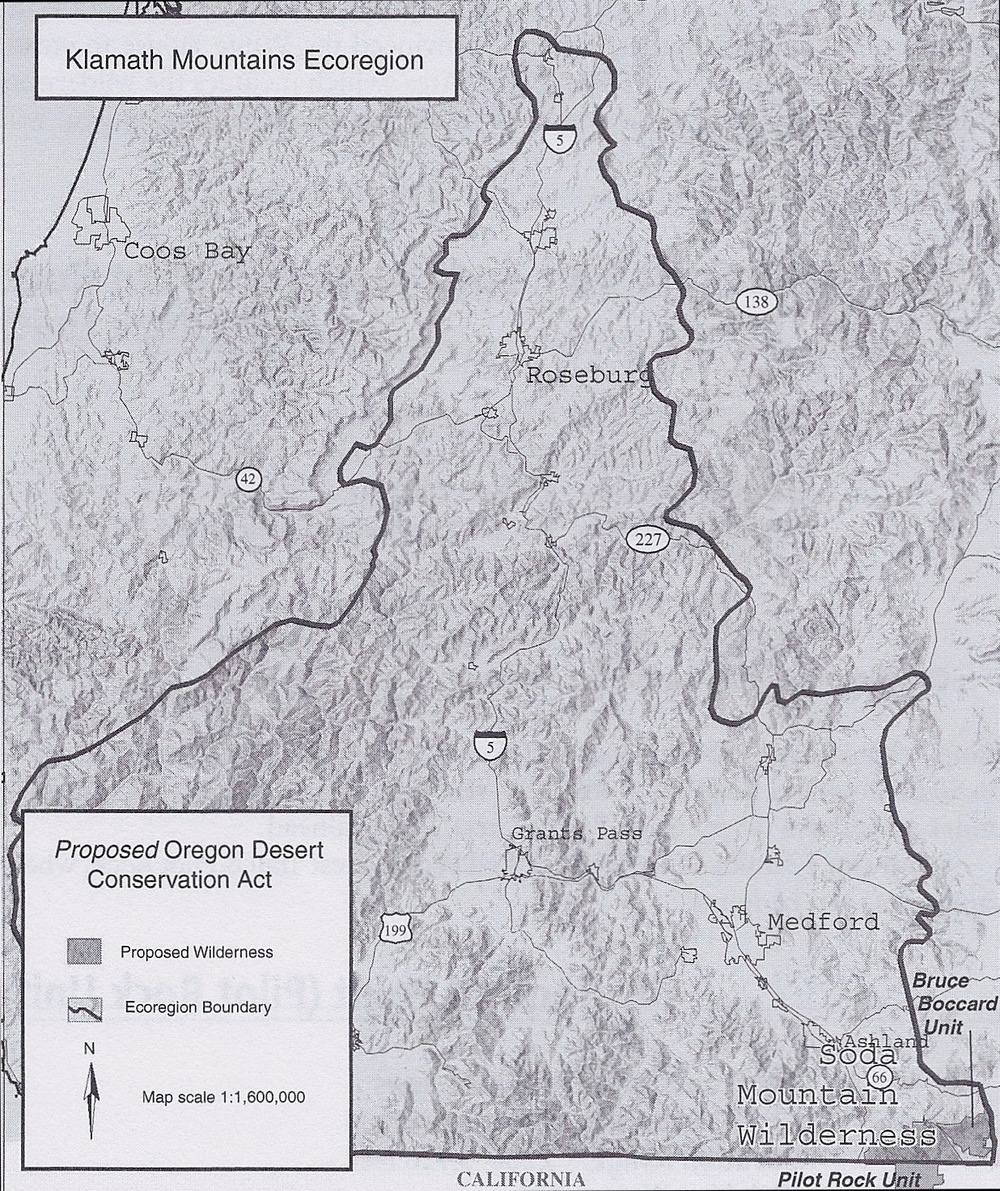 Klamath Mountains
Klamath Mountains
Suggested Citation: Kerr, Andy. 2000. Oregon Desert Guide: 70 Hikes. Seattle: The Mountaineers Books. p. 175.
<<<-Previous Table of Contents Next->>>
The Klamath Mountains ecoregion is not considered desert, nor should it be. It is west of the Cascade crest, and annual rainfall ranges from 20 to 120 inches. Elevations range from 100 to 7,500 feet. The Klamaths, Siskiyous, and several other mountain ranges that comprise the ecoregion are generally forested and include the most diverse conifer forests in the world (thirty species). The wide valleys of the Klamath, Rogue, and Umpqua have a drier feel to them, as do the savanna-like foothills, but these are far from desert conditions.
Yet, the ecoregion possesses some elements of the Oregon Desert. For example, in parts of the Rogue and Klamath Basins, one finds sagebrush and western juniper. Amazingly, pronghorn used to inhabit the Rogue Valley, moving to the high Cascades in the summer.
In the words of the Oregon Biodiversity Project, the Klamath Mountains are a "floristic crossroads" where species of the Sierra Nevada, Sacramento Valley, California Coast Range, Washington and Oregon Cascades, and the Great Basin all converge.' This is starkly obvious, even to the botanically challenged, in places like Soda Mountain.
The very diverse habitat is a focal point of biodiversity. The ecoregion is a major center of species endemism and diversity. Of the four thousand native taxa in Oregon, one-half are in the Klamath Mountain ecoregion, and one-quarter of these are found only in the ecoregion.
That makes sense in this oldest part of Oregon. Unlike much of the rest of the state, this ecoregion is not largely influenced by volcanism. The rock is more metamorphic and sedimentary than igneous.
The Oregon Biodiversity Project has estimated that 16.2 percent of the ecoregion is adequately protected to conserve and restore biodiversity.
